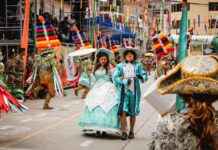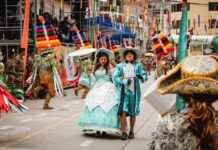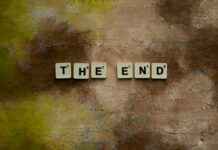In the vast corridors covered with posters and tags of this cultural center resounds the screeching of the trains, that of the TGV leaving the nearby Saint-Charles station. The wagons transporting cigarette paper have long since disappeared from this former Tobacco Factory, which closed in 1990.
Two years later, with the backing of Marseille’s cultural assistant, Julien Blaine, the «Système Friche Théâtre», the founding association, took up residence there, in one of the most disadvantaged areas of France.
«The idea was that culture can be an economic alternative in premises where industry comes up against a kind of obsolete character», recalls Philippe Foulquié, one of the founding fathers of the project. «The condition was that she did not lock herself in her chapels».
Pioneer of cultural «third places», these places allowing the crossing of cultural practices and social approaches, the Friche la Belle de Mai will celebrate its thirty years on Saturday during a big popular festival.
«The real difference with ordinary third places is that from the start, La Friche was a place that wanted to open up to the Belle de Mai district», poor and working-class, adds Matthieu Poitevin, l architect who worked for more than 20 years on the transformation of the old factory.
– «Everything was possible» –
If the dramatic art was present from the beginning, in particular via the Massalia Theater directed by Philippe Foulquié, other disciplines have gradually been welcomed: music, dance, cinema, literature, digital arts, plastic or culinary.
«The first real location of IAM (Marseille rap group), the first cybercafé in France, is here», recalls Fabrice Lextrate, another founder of La Friche, of which he now co-directs the restaurant, Les Grandes Tables.
«At first, the Friche is a space that invites people to disseminate in disciplines where we are not competent. This is how we create an interdisciplinary dynamic», explains Philippe Foulquié, director until 2010. «Musicians didn’t go to the theatre, theater people didn’t go to the music, but little by little it happened».
All in «great freedom», he adds. «The only obligation we had was to invent, by mixing disciplines and audiences. So we made attempts, moreover it was called Hypotheses and artists’ attempts».
«Nothing stopped the imagination, everything was possible», abounds Marie-Josée Ordener, who worked for the Massalia Theater before co-founding Les Grandes Tables. «The artists had the best part: apart from creating, we didn’t ask them much».
«We were on this momentum where the collective was the most important thing», even if «at the very beginning, the Friche, it was the rats which ran on the balustrades, the projectors which caught fire. It was totally borderline on everything,” she recalls.
In 1995, under the presidency of architect Jean Nouvel, La Friche was part of a vast urban renewal plan for France’s second city.
The original site of the factory is divided into three entities, including the «authors’ center dedicated to living culture», which occupies 45,000 m2, more than ten times the exhibition area of the Museum of European Civilizations and of the Mediterranean (Mucem).
The election of Marseille as European Capital of Culture in 2013, of which La Friche was a major beneficiary, marks a turning point, with works amounting to up to 30 million euros.
– «End of town» –
An envelope that allows the development of the roof terrace, a Panorama Tower, two performance halls, a nursery, shared gardens…
«From that moment, there is a form of institutionalization despite oneself», underlines Alban Corbier-Labasse, its current director, but «the magic» and the «unclassifiable dimension» remain.
«We are open 365 days a year, 7 days a week, from 8 a.m. to 11 p.m. There are always people working here, there is always activity,» he notes.
With 70 resident structures, or 400 people, the Friche now hosts around 600 events a year and nearly half a million visitors, including many foreign artists.
«La Friche is a piece of town and it is a total social space where all the problems and all the dynamics of Marseille intersect», analyzes Mr. Corbier-Labasse. «It clashes and, without us provoking it, it generates unique situations».
Around the only wagon that the site retains, that of the playground, families from the neighborhood come to seek a bit of freshness in the scorching summer while on the rooftop, revelers rub shoulders with the stars to the sound of electro DJs from Detroit or Berlin.
















